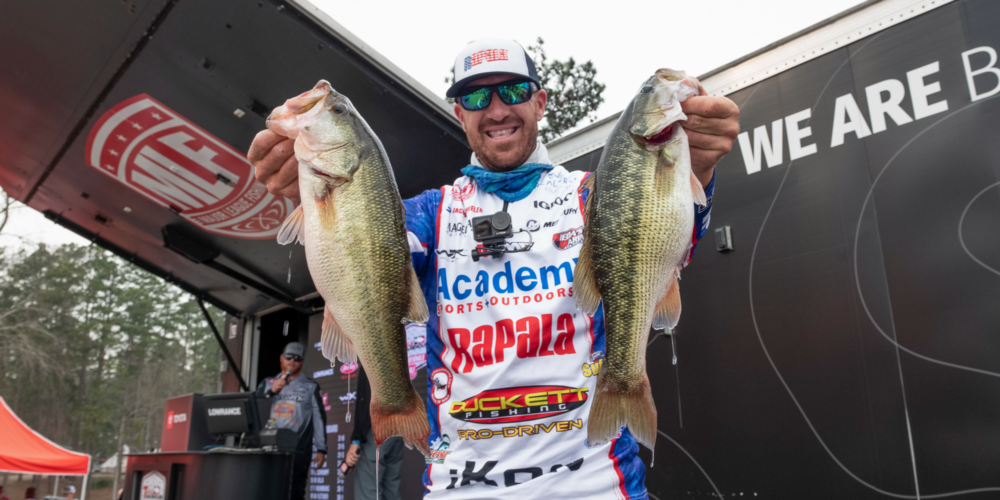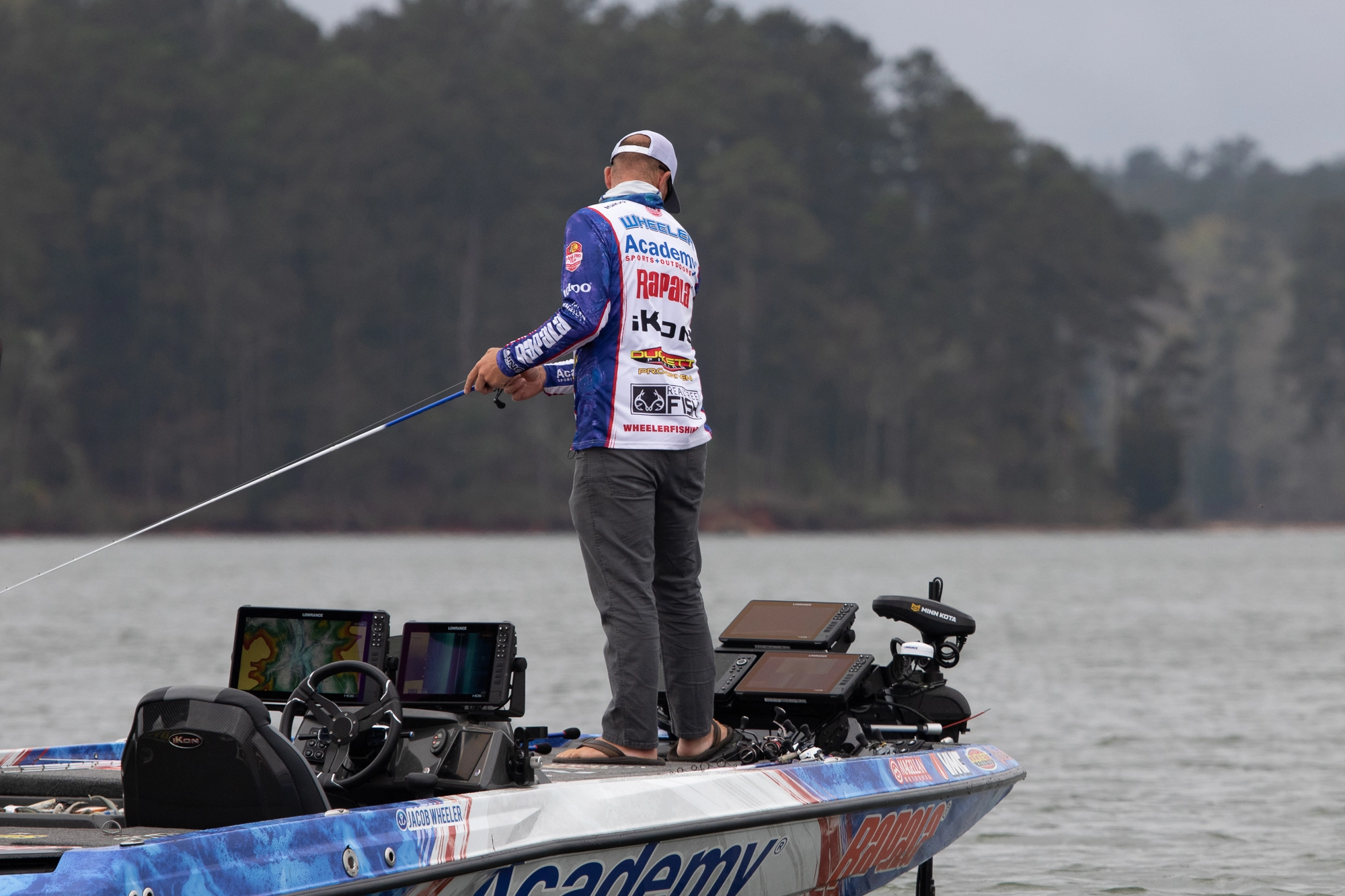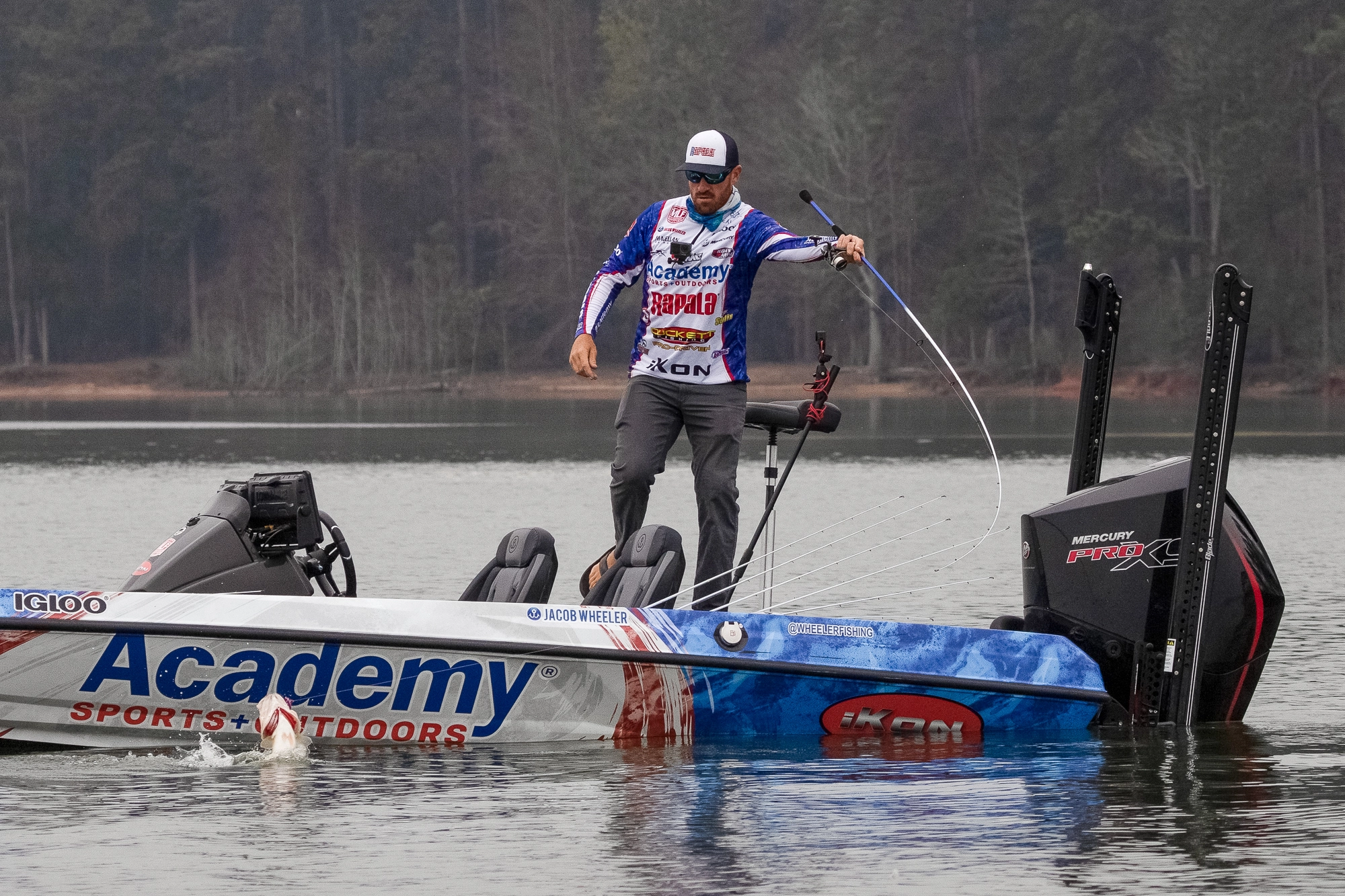JACOB WHEELER: Clarks Hill Lake was a great tuneup for REDCREST on Lake Norman
Team Mercury Pro got in some crucial pre-REDCREST work in Georgia

I just finished up fishing the Invitational on Clarks Hill Lake in Georgia last week. Obviously, I want to win every tournament I enter, but I fished that one mostly as a warmup for REDCREST at Lake Norman this week.
Norman is only a couple hundred miles northeast of Clarks Hill. Both are Carolina-style lakes in the same region of the country and have a mix of spotted bass and largemouth. Many times, what’s happening at one lake this week will be happening on another lake to the north the next week, as winter turns to spring going up the East Coast.
Certainly, Clarks Hill and Norman are two different lakes, but there are enough similarities to me that fishing Clarks Hill last week was a great dry run for Norman and a shot at REDCREST.
Electronics dialed in

Last week at Clarks Hill, I was able to really dial in my electronics for REDCREST. I’ve always said that highland impoundments with deep water and mixed species are excellent training grounds for forward-facing sonar. They’re great places to really tune your sonar gear up to get it “seeing” the best it can. My first couple of tournaments this year were in Florida and though my ActiveTarget works great in Florida, Florida is nothing like a deep impoundment with timber, brushpiles, rocks, docks and spotted bass to really get things tightened up.
Dealing with springtime pollen was also a huge learning experience for me at Clarks Hill. Pollen that sinks below the surface and then sort of suspends in the water column can make sonar signals get a little weird. I found a few hacks for dealing with this if the pollen happens to be bad at Norman too.
I spent a lot of time during the Clarks Hill tournament tinkering with new presentations in combination with ActiveTarget in terms of getting fish to react. That helped me add another option or two to my forward-facing lure arsenal.
Finally, there’s no substitute for spending time fishing with forward-facing sonar in order to become more accurate at hitting targets and strike zones precisely. It’s sort of like free throws in basketball: if you want to get better at it, stand at the foul line shooting for hours and hours until you can drain them.
Skipping school
While at Clarks Hill, I also spent a lot of time sharpening up my dock-skipping game with different lures that are notoriously hard to skip. It’s no secret: Norman is absolutely loaded with docks of all kinds, and they’re going to play a part in some fashion at REDCREST. Skipping docks is a dicey game of quietly feathering a bait to the fish without them ever knowing it’s coming. Faceplanting a lure into the water, banging the lure into pilings or crossbeams, or picking out backlashes while the bait needs to be in motion are complete wastes of presentations.
With just two days of practice at Norman on Sunday and Monday, I want to be able to sample docks as smoothly and as efficiently as possible. I might just sample a few key docks each day and I won’t have the time to get my skipping tuned up to test the dock bite. After skipping docks a couple hours each day at Clarks Hill, I think I’m ready to float some lures into tiny spaces.
Tuning, timing and rhythm

At Clarks Hill, I also spent more time during competition than I normally would tuning up lures and experimenting with different lure profiles. Bite windows in Carolina lakes are pretty fickle. They open and close quickly with rapidly changing conditions. Being able to have an extra lure that extends the size of the window in terms of time or area will be crucial in getting a couple of extra bonus bites when things are right.
I don’t believe the winner of REDCREST is going to be fishing a single technique in a single area all five days. If we were still in an every-fish-counts format, maybe that would be the case. But given the five-fish format, I think there’s going to be a lot of mixing and matching of techniques and areas. I’m not going call it straight junk-fishing because it’ll be more structured, again mostly dictated by conditions. There will be more of a rhythm to it.
I can totally see starting the event fishing one way in one area to make the cut, but after that, sort of surfing different bite windows in different zones to put it all together for the win. One thing I definitely learned from Clarks Hill is not to get too married to an area or technique. My goal will be to fish more freely at this REDCREST than in any other championship event I’ve ever fished.
Given the weather forecast and so many other variables, REDCREST at Lake Norman will be a very fluid situation. Staying on the fly and finding a rhythm to that fluidity is going to be the key to winning.
Needless to say, I feel like fishing at Clarks Hill six days has certainly put me in the right frame of mind for REDCREST.